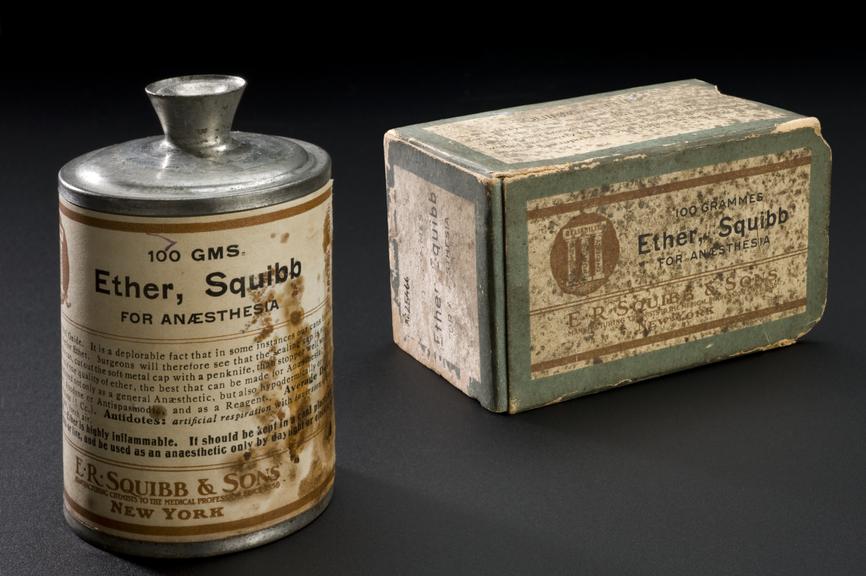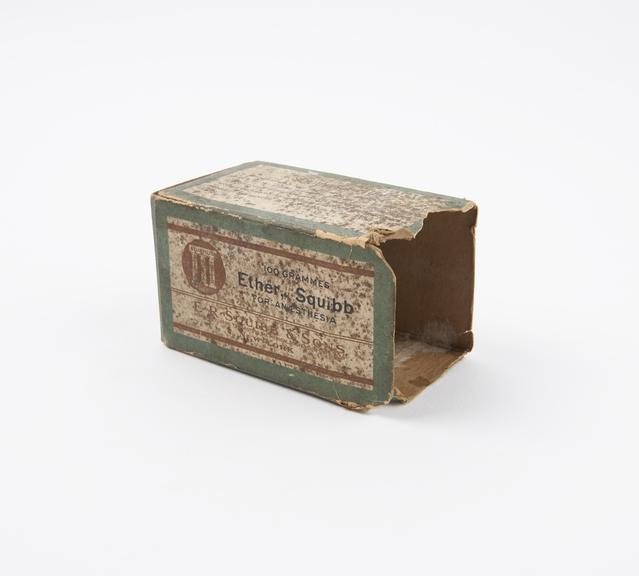Unopened metal bottle of ether
Unopened metal bottle containing ether, by E.R. Squibb and Sons, New York, USA, 1891-1930
More
The maker, E R Squibb & Sons, sold ether as an anaesthetic to be inhaled and also as a stimulant and to relieve muscle spasms. Ether in this form can be injected or taken by mouth – in tiny quantities. Decades on, the bottle still contains 100 grams of ether.
Cans of this type were also adapted by Paluel Joseph Flagg (1866-1970) of New York to be used as an emergency inhaler. Empty cans were filled with the required amount of ether and air holes were punched into the lid. A tube attached to the top could then be inserted into the patient’s mouth.











